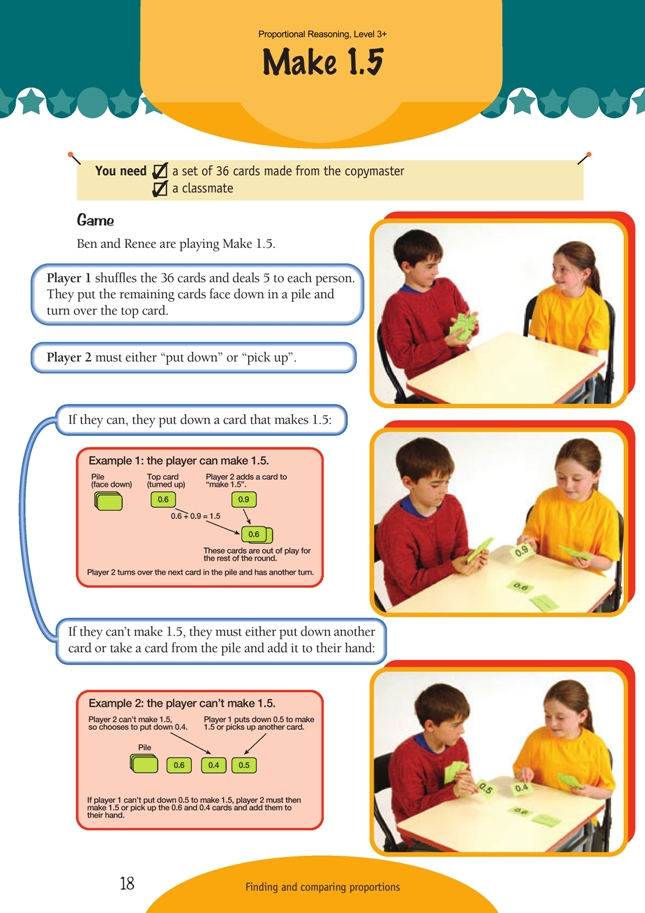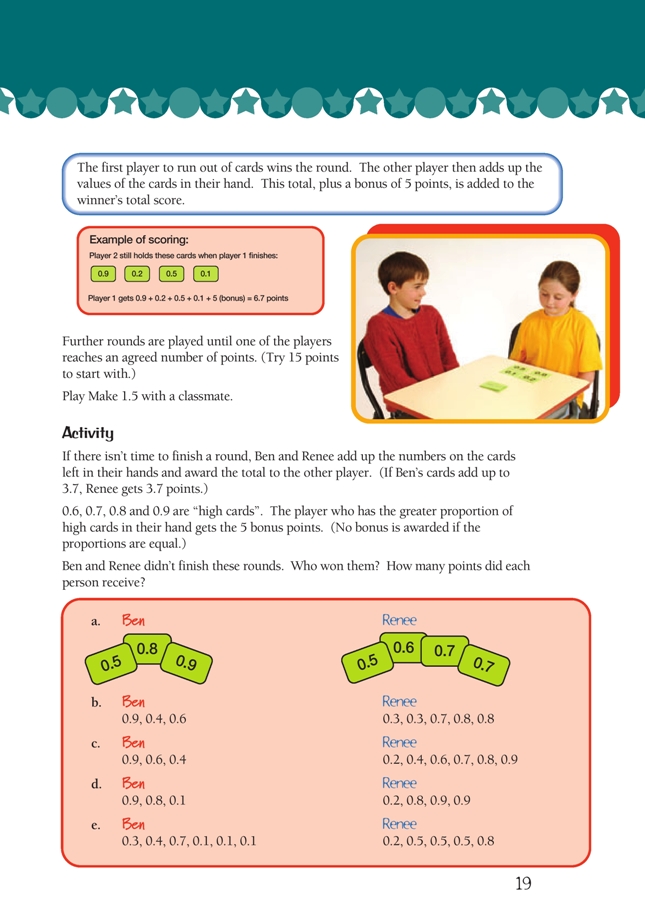This is a level 3 and 4 number activity from the Figure It Out series.
A PDF of the student activity is included.
Click on the image to enlarge it. Click again to close. Download PDF (1038 KB)
adiing simple decimal numbers.
Number Framework Links
Use this activity to:
- help students consolidate their basic addition facts (stages 5 and 6) and whole number strategies and apply these to decimal numbers (stage 7)
- introduce the idea that proportions can be compared (stage 8).
Copymaster
Game
This game is designed to give students practice at adding decimals. The range of numbers used (all expressed to 1 decimal place) reinforces students’ knowledge of basic number facts at the same time as it strengthens their understanding of place value.
If your students have had only a little experience of decimals, you may find it worthwhile to do some pre-teaching using The Value of Place Value (Book 5: Teaching Addition, Subtraction, and Place Value, Numeracy Project series, page 48).
The game is similar to games that students may already be familiar with and is straightforward to learn and play. But it is a good idea to introduce it to the whole group using another target number (for example, 1.7). If you do this, you can make sure that everyone understands the rules, knows the aim of the game, and is aware of the mathematical strategies needed. Some students will be able to use known facts to handle all the additions. Others may use tidy number and/or doubling strategies. For example: you have 0.9 and are trying to make 1.7. 0.9 + 0.1 = 1, and 0.1 + 0.7 = 0.8, so 0.8 is the card needed.
Make sure, too, that everyone knows how to score the game. Players can only earn points if they get rid of all their cards before the other player. The points they earn are the total of the numbers on the cards left in their opponent’s hand plus the 5 bonus points. The 15 points total to win a game is only a suggestion. Working to that total, the bonus points alone will ensure that the first player to win 3 rounds wins the game. The winner may even reach the total of 15 in 2 rounds if their opponent is left with a number of high cards each time.
Activity
The activity is an extension to the game (not a necessary part of it) that involves adding multiple decimal numbers and determining which of two proportions is greater. This latter skill will be new to a number of students, and you will need to think about how to introduce it. Mixing Numbers (Book 7: Teaching Fractions, Decimals, and Percentages, Numeracy Project series, pages 34–35) suggests one approach. Fraction Strips (Material Master 7-7) provides another approach. All the proportions encountered in questions a–e can be found on this material master and easily compared one with another. A third approach is to express each pair of proportions as fractions over a common denominator. It is then immediately obvious which is the greater.
Answers
Game
A game involving decimal fractions.
Activity
a. Ben gets 2.5 points; Renee wins with 2.2 + 5 = 7.2 points.
b. Renee gets 1.9 points; Ben wins with 2.9 + 5 = 7.9 points.
c. No bonus. Ben wins with 3.6 points; Renee gets 1.9 points.
d. Ben gets 2.8 points; Renee wins with 1.8 + 5 = 6.8 points.
e. Ben gets 2.5 points; Renee wins with 1.7 + 5 = 6.7 points.

